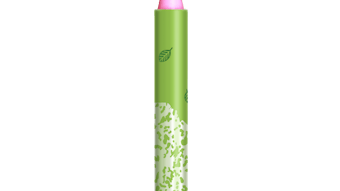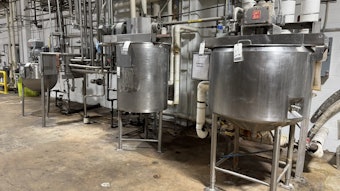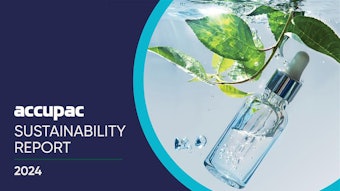
No one can be certain what a new U.S. administration will mean for trade or the economy, but with worries over trade wars looming, alongside cautious consumer spending in many markets, Global Cosmetic Industry reached out to a panel of experts from the beauty supply chain to get a sense of how people are preparing. One key theme kept emerging: cost.
Log in to view the full article
No one can be certain what a new U.S. administration will mean for trade or the economy, but with worries over trade wars looming, alongside cautious consumer spending in many markets, Global Cosmetic Industry reached out to a panel of experts from the beauty supply chain to get a sense of how people are preparing. One key theme kept emerging: cost.
 Dan Wolfe, senior vice president of business development, Cosmopak.Cosmopak
Dan Wolfe, senior vice president of business development, Cosmopak.Cosmopak
He adds, “In order to maximize the value to cost ratio for our clients we focus on two areas: geographic manufacturing optimization and timeline and project management.
Wolfe notes, “China has many strengths, including a vast supply chain of decoration suppliers, an efficient and skilled workforce, and a wide array of stock molds. However, shifting geopolitical dynamics and the potential imposition of tariffs have presented challenges.”
He adds, “One of the most effective approaches Cosmopak has implemented to mitigate risk and keep costs low is the cultivation of partnerships with suppliers in other regions, including Southeast Asia and Latin America, which it has been doing over its history. By establishing alternative manufacturing hubs, our clients reduce their dependency on China while taking advantage of cost savings from these increasingly sophisticated markets. Southeast Asia, with its expanding industrial base and competitive labor costs and proximity to China, provides a promising alternative for cost-effective production while tapping into the raw material supply chain and expertise from China. Latin America, meanwhile, offers proximity to key Western markets, enabling faster shipping times and reduced transportation costs.”
Wolfe concludes, “At Cosmopak, we have always prioritized speed-to-market in our development and manufacturing processes, helping clients respond rapidly to trends. Many customers use a just-in-time (JIT) product model, and we collaborate closely with our clients to develop precise, achievable timelines. Our approach balances the benefits of JIT with the practicality of avoiding costly expediting measures, such as air freight. Cosmopak’s dedication to strategic planning and reliability ensures our partners can confidently continue a JIT model while eliminating unexpected costs.”
Navigating Tariffs and Cost Optimization
 Earl Trout, vice president sales, North America, Aptar Beauty.Aptar Beauty
Earl Trout, vice president sales, North America, Aptar Beauty.Aptar Beauty
“We’re seeing two things regarding the tariffs,” says Samantha Burd, co-owner of Lady Burd Cosmetics. “1. Stocking up on imported goods now before January rolls around. 2. Looking into alternative countries to source goods from (think: South America).”
Burd adds, “We continue to urge our brands to be forward thinking and pre-plan as much as possible!”
Local Production: A Strategic Advantage
Trout and Kenny note, “Brands are prioritizing local production to avoid the steep tariffs already imposed on imported pumps, which have surged from 25% to over 50%. This shift not only helps in cost efficiency but also ensures quality assurance and faster turnaround times. Aptar’s US and Mexico manufacturing facilities are well-equipped to meet these demands, providing top-quality products with shorter lead times, thus enhancing supply chain responsiveness.”
Client Strategies and Requests
 Ryan Kenny, president, North America, Aptar Beauty.Aptar Beauty
Ryan Kenny, president, North America, Aptar Beauty.Aptar Beauty
Advice for Brands
 Samantha Burd, co-owner of Lady Burd Cosmetics.Lady Burd Cosmetics
Samantha Burd, co-owner of Lady Burd Cosmetics.Lady Burd Cosmetics
- Leverage local production: This reduces dependency on imports and avoids high tariffs.
- Enhance supply chain efficiency: Local sourcing can significantly cut down lead times and improve market responsiveness.
- Maintain quality standards: Ensure that local suppliers adhere to high-quality standards to meet consumer expectations.
- Adopt a global-local approach: Partner with suppliers that offer a blend of global leadership and local-level focus. This dual strategy ensures flexibility and resilience, allowing brands to leverage global capabilities while meeting specific local needs.
The executives conclude, “By adopting these strategies, brands can better navigate the current economic landscape and maintain a competitive edge.”
Optimizing Costs from Product Inception
Efficiencies in Manufacturing
 Laura Horne vice president of sales and marketing, FP Labs at Federal Package.Federal Package
Laura Horne vice president of sales and marketing, FP Labs at Federal Package.Federal Package
Horne adds, “Many brands are focused on speed to market and are willing to take a lower margin, for a period of time, with the thought that together we could find optimizations. This strategy, with the right partner, has allowed brands to capitalize on innovation quickly and plan for future cost savings that can be invested back into the brand.”
A Focus on Early-Stage Design
 Sundeep Gill, owner, Sun Deep Inc.Sundeep Inc.
Sundeep Gill, owner, Sun Deep Inc.Sundeep Inc.
Gill adds, "When attempting to optimize costs of existing product lines on the market, it is important to have a clear understanding of what country each material is being sourced from. This can then give you a reasonable idea of where tariffs can cause disruption in your costing structure. Another aspect to consider when it comes to cost reduction, is to evaluate the different grades of material and the brand marketing values. For instance, the same fatty alcohol can have vastly different cost impacts if it is sourced from an RSPO source or not. Understanding what certifications are important for the brand’s marketing, prior to any changes for a simple cost reduction, will help prevent any marketing calamities."













